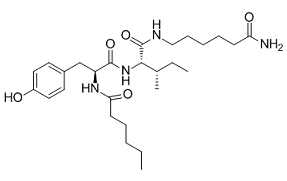This study used questionnaires to exclude subjects who claimed to have exercised strenuously or regularly within 1 month before to the study. Resting energy expenditure measurements and 24-h activity monitoring will clarify this possibility. Moreover, it will be useful to test irisin levels both before and after exercise training. We have examined the irisin levels with both western blotting and an enzyme immunoassay kit, and confirmed the decreased levels of irisin in CKD patients. However, we noticed a discrepancy between the irisin levels detected by western blotting and enzyme immunoassay. The plasma samples used for these 2 different detection methods were processed differently. Plasma samples used for enzyme immunoassay were unprocessed, whereas those used for western blotting detection were deglycosylated and precleared of IgG and albumin. We believe these different sample preparation methods may have resulted in the discrepancy in irisin levels. The irisin levels detected with western blotting are more likely to be of the free form unbound to proteins. Future work on the protein-binding ratio of irisin and irisin metabolism would be needed to resolve these questions. This study has some limitations. Our strict patient selection criteria excluded patients with diabetes, liver function abnormalities, heart failure, stroke, systemic lupus erythematosus, and severe obesity. Therefore, the results of this study are not applicable to all CKD patients. Further, this study did not measure the subfractions of HDL cholesterol. The effect of irisin on HDL cholesterol composition warrants further study. Moreover, our study design did not allow us to infer the mechanism of action of irisin. Further therapeutic clinical trials or animal studies are necessary to clarify the mechanisms underlying the effects of irisin. It is also important to test if the changes in irisin levels correlate with the progression of CKD from stage 1 to stage 5. In summary, this study demonstrated that irisin levels are decreased in patients with CKD and are positively associated with HDL cholesterol concentration. Irisin may be a promising therapeutic agent for treating cardiovascular disease in CKD patients. Cell survival hinges on the ability to respond to extracellular stimuli and self-regulate in a changing environment. Intracellular dynamics are controlled by intricate arrays of biochemical networks, and in particular, the spatiotemporal dynamics of species concentrations are key to a number of processes, including cell signalling, pattern formation and morphogenesis. Quantifying the signal transmission properties of a network is key to understand how its connectivity and AbMole Povidone iodine parameters shape the conversion of signalling cues into cellular responses, as well as the detection of intervention points for engineering or therapeutic applications. Our goal in this paper is  to provide tools for the mathematical quantification of signal transmission in biochemical networks. We use the time-integral of species concentrations as a proxy for the ability of a network to transmit input cues. It represents the cumulative effect of external stimuli on the chemical species and has been used to discover an input amplification phenomenon in the MAPK pathway, and to study the activation of cell membrane receptor such as the epidermal growth factor and the erythropoietin receptors. We focus on networks of biochemical reactions subject to molecular diffusion and spatiotemporal stimuli. We aim at obtaining exact formulae for the time-integrals of species concentrations. An analytic approach can reveal structural properties of the model under consideration, as opposed to simulation-based studies where it is unclear if predictions are rather a consequence of the particular parameter values examined.
to provide tools for the mathematical quantification of signal transmission in biochemical networks. We use the time-integral of species concentrations as a proxy for the ability of a network to transmit input cues. It represents the cumulative effect of external stimuli on the chemical species and has been used to discover an input amplification phenomenon in the MAPK pathway, and to study the activation of cell membrane receptor such as the epidermal growth factor and the erythropoietin receptors. We focus on networks of biochemical reactions subject to molecular diffusion and spatiotemporal stimuli. We aim at obtaining exact formulae for the time-integrals of species concentrations. An analytic approach can reveal structural properties of the model under consideration, as opposed to simulation-based studies where it is unclear if predictions are rather a consequence of the particular parameter values examined.